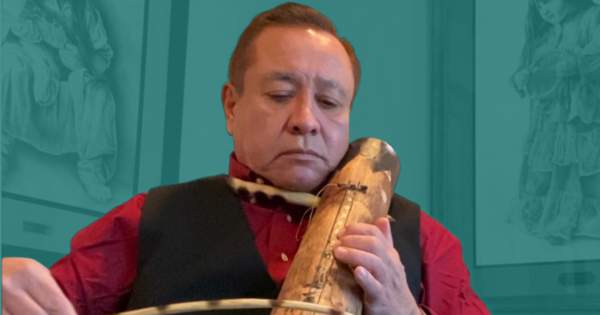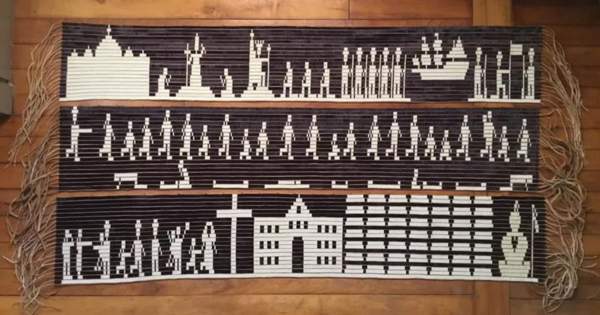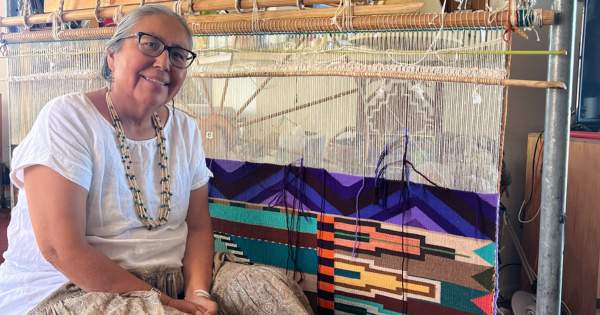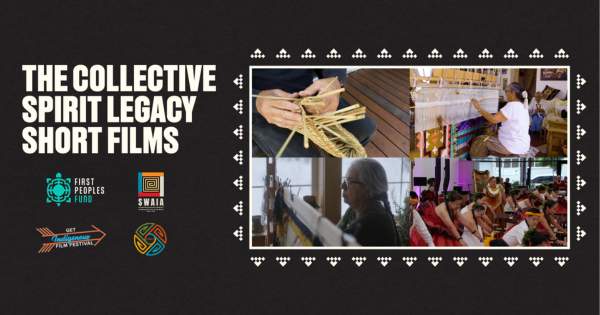
“Natay, Navajo Singer” Circa 1958
Ehren Kee Natay is a multimedia artist and a recognized member of the Navajo Nation. As a professional musician, he has toured and performed in venues in the Southwest and West-coast regions of the U.S. Several of his visual works are being preserved at two New Mexico Heritage Museums and at the Indian Arts Research Center. He has held exhibitions both nationally and internationally. His current work further infuses his musical craft with visual aesthetics via live-performance.
He is a 2020 First Peoples Fund Artist in Business Leadership Fellow and resides in Santa Fe, New Mexico.
Sitting in the backseat of the family’s Ford Bronco during a road trip as a young boy, Ehren listened to the music of a Navajo singer playing in the cassette player. After several songs, his father said, “This is my dad; the voice of your grandfather.”
“Where is he?” If Ehren could hear his grandfather singing, surely he could meet him.
It wasn’t to be. His dad explained that Ehren’s grandfather, Ed Lee Natay, had passed before Ehren was born.
“But he was a famous singer, and his voice lives on through his recordings,” his dad added.
Ed Lee Natay was the first Native American to record an album for commercial release and was the first artist signed to Canyon Records. In early adulthood, Ehren downloaded “Natay, Navajo Singer” onto his iPod, replaying the tracks again and again.
“When I sing his songs, it is an energizing experience, as though his voice and his energy are resonating within my being.”
“The playback feature allowed me to pinpoint the subtle nuances of his unique vocables,” Ehren says. “When I sing his songs, it is an energizing experience, as though his voice and his energy are resonating within my being.”
Ehren joined his first band at age 12, evolving into a professional musician by the age of 19. Around that time, he realized he could apply the same dedication and discipline to master visual arts. Ehren began receiving acknowledgment for his visual artwork through fellowships, exhibitions, and awards. Before long, he had created another professional career.
Ehren combined music and visual arts through an original piece, “Natay, Navajo Singer” Circa 1958, of himself and his grandfather listening to a record.
Inspired by film noir of the 1950s, Ehren created his attire for the photo that he superimposed on the image with his grandfather. He sculpted a Flash Gordon-era space gun from sterling silver and turquoise and attached it to a kegoh, a Navajo bow guard. He also wears a sterling nahazha, a traditional symbol of protection. The photographic image, the space gun, and a musical track are displayed together when it is exhibited.
“My grandfather’s works are, to me, an access point to reconnect my people and my culture,”
“My grandfather’s works are, to me, an access point to reconnect my people and my culture,” Ehren says. “I wanted to do it in a way that visually solidified that.”










































































































